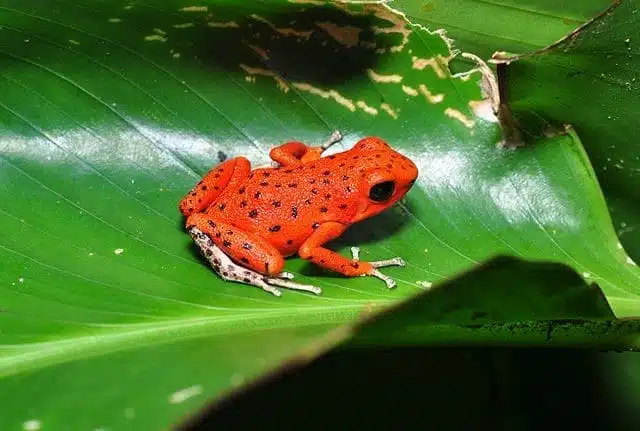Welcome to this article about the most incredible red animals.
Various colors occur among animals in the wild, but red animals seem to give a certain cool and breezy impression not akin to other animals.
Perhaps this is because the light receptors in the human eyes are optimized to see red, blue, and green, and all other colors are only a result of the perception of these colors in the brain.
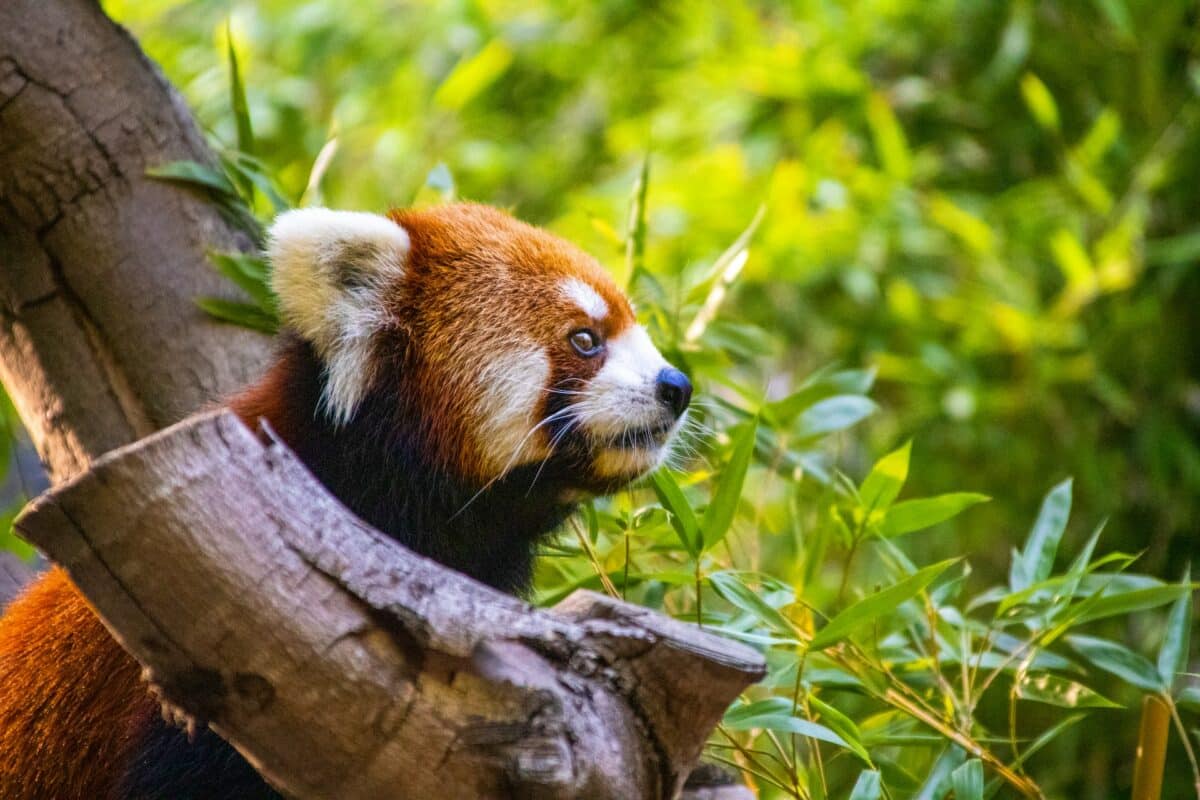
Red is a fiery emotional color; its shades signify passion, danger, warmth, anger, and other positive and negative connotations. Likewise, in the animal kingdom, these undertones remain consistent.
Red animals like the scarlet tanager are known to be aggressive towards other birds and members of their species. You don’t want to go anywhere near the strawberry poison dart frog lest it secretes its dangerous incapacitating toxin.
They’re not all terrifying, though. Red animals, such as the ladybug, are considered friendly by humans. They are natural biological control of pesky insects like aphids and make cute pets.
What Gives Red Animals Their Colour?

Red isn’t just any color; it’s a hue that sets certain creatures apart, thanks to their unique pigmentation genes.
But hold on, before you start picturing red pandas or red squirrels, they’re not true reds. Their fur boasts an array of shades from red and orange to brown, black, and even mixed hues.
Our list here, however, delves into the world of genuinely red animals, spanning the spectrum from crimson and scarlet to cardinal and more.
These true red wonders possess skin pigments that break away from the typical melanin that’s behind the coloration of most mammals. That’s why our lineup predominantly features birds, insects, amphibians, and marine species.
Sure, we humans and other mammals have some red pigment, known as pheomelanin, but the dominant melanin pigment in our fur is eumelanin.
Now, how do these red-hued creatures achieve their vibrant shades? Well, they’re artists in their own right, combining various pigments. Most of them can produce these pigments naturally, but some rely on their diet for that crimson touch.
Birds, for example, use natural pheomelanin, along with psittacines and carotenes from their diet to paint their feathers in splendid reds. Insects, on the other hand, employ a mix of melanin, carotenoids, and carminic acid to achieve their striking red hues. Fish and amphibians, meanwhile, have their own unique palette of pigmentation cells.
Amphibians, such as frogs, can tweak the pigment in their cells to create different color intensities. Fish take their cues from carotenoids, which dance with light intensity and saturation in their aquatic homes to bring out their reds.
Why Red Coloration In Red Animals?
When you take a critical view of it, red colors may seem impractical for some animals. It makes them stand out from the vegetation and makes it easier for predators to recognize them—small creatures, especially, may be at a significant disadvantage.
On the flip side are the benefits. Predatory red animals use their color to attract curious unsuspecting prey. Regarding the smaller animals, their color serves as a form of aposematic coloration, warning predictors of imminent toxicity. Sometimes though, it’s all just a show, a bluff to scare off predators.
Because of their flashy colors, many red animals are desired for display in aquariums, zoos, and as personal pets. This further underlines their status as cool creatures. Here is an in-depth look into some of these stylish beasts.
10. Seven-Spot Ladybug
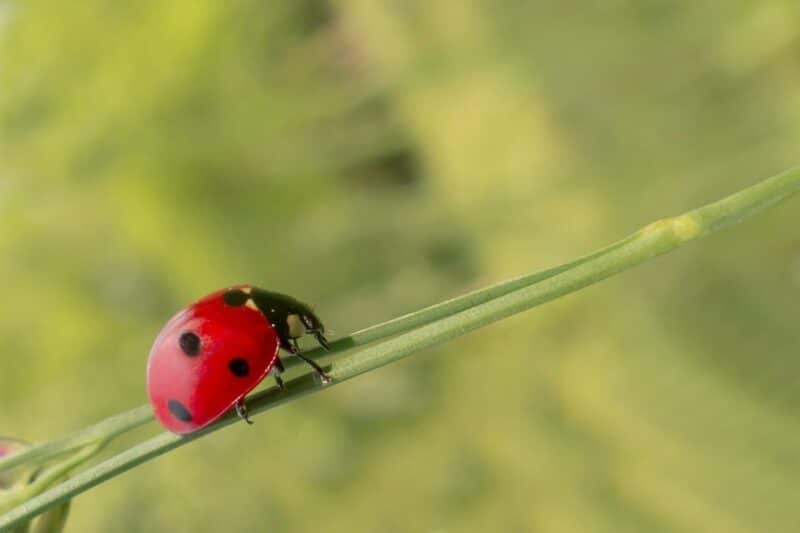
The seven-spot ladybug is the most widespread ladybug species. It can be easily distinguished by its red forewings, which have seven black spots, three on each wing and one more prominent spots overlapping both wings.
These insects are relatively small, growing only up to 0.5 inches, so they are easy prey for more enormous insects. However, their red color warns predators that they are foul to eat. If that doesn’t deter predators, they can play dead and secret a foul-smelling alkaloid from their limbs.
These beetles were originally native to the meadows and forests of Western Europe and Asia. But their voracious appetite for parasitic aphids has prompted their introduction into North America and tropical Africa by humans.
Even though they sometimes feed on pollen and nectar, seven-spot ladybugs are so dependent on aphids that their population often reduces wherever aphids are absent.
9. Tomato Frog
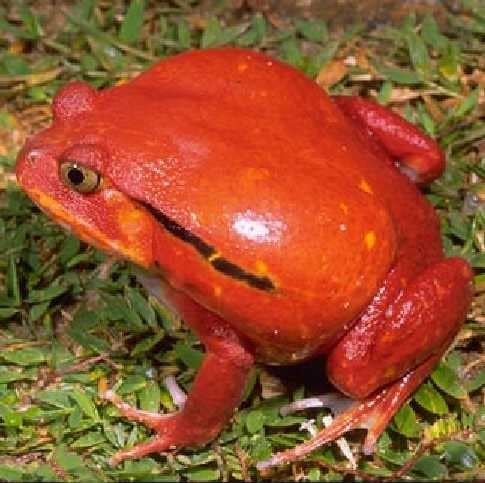
You guessed it; the tomato frog derives its name from its distinctive red color. Not only that, but this frog also puffs up its body when threatened to look more menacing to possible attackers.
Should a predator grab the tomato frog, it secretes a mouth and eye-numbing toxin, making the predator-free it from its grasp. Though not lethal to humans, this substance can cause strong allergic reactions.
The red tomato frog is found only in Madagascar. Females are usually more brightly colored than males and lay eggs all year round except in November. They are quite sizable, growing up to four inches, and their lifespan can range from 6 to 8 years.
8. Northern Cardinal
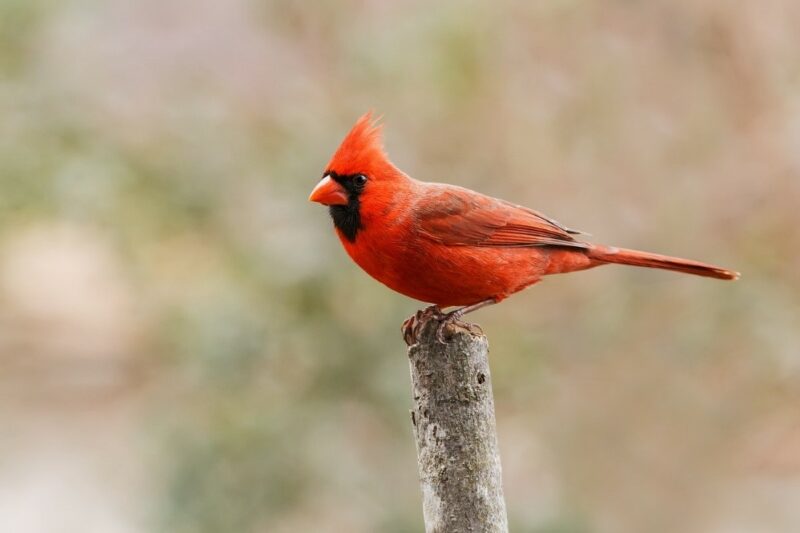
Sometimes known as the redbird or simply cardinal, the northern cardinal is a mid-sized songbird native to North and Central America. Its range covers southern Canada, south to Texas, through Mexico, Guatemala, and Belize. It can be found on low-lying vegetation in gardens, woodlands, and wetlands.
These birds get their names from the similarity of their colors to the distinctive red robes worn by Roman Catholic Cardinals. Though both genders are typically red, the coloration is more pronounced in males than in females.
The male cardinal has bright red plumage, crest, and bills with a black face, while female cardinals have a more olive-red color. The brick-red crests on their heads give them a cool and commanding presence. The prominence of this crest probably factors into their mating behavior because these animals are highly territorial.
They can grow up to 9.3 inches with a wingspan of 12.2 inches. During courting, the male goes out to find food and often feeds the female by dropping it into her beak. Even though 90% of the adult bird’s diet consists of grains and fruits, they feed their young juveniles exclusively on insects.
The northern cardinal’s vibrant red colors come about because they can metabolize carotenoid pigments in their diets to create plumage pigmentation. This ability is less pronounced in females, hence their dull color. They have a stable global population of over 100 million, so they are considered of Least concern by the IUCN.
7. Red Velvet Ant
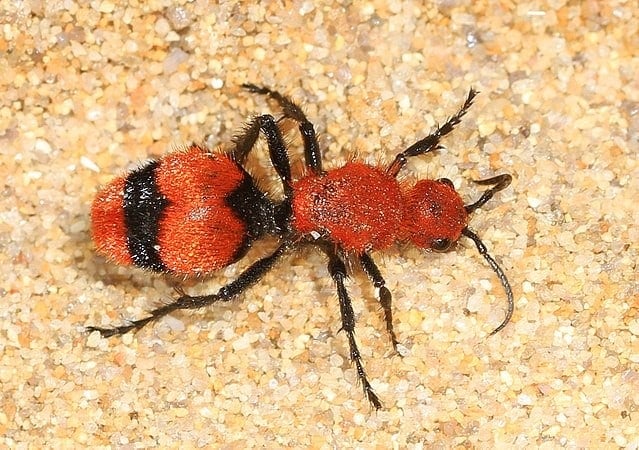
The red velvet ant is an insect species native to the eastern United States, ranging from Connecticut in the northeast to Florida in the South. Although they are commonly called ants, these red animals are parasitoid wasps. Their common name arises due to the unique nature of the species.
Female red velvet ants are wingless and have a solid, painful sting. For this reason, they are referred to as cow killers. Contrastingly, the male velvet ant has wings and no sting.
However, their distinctive red color, thick velvet hair, and black stripes across their abdomen can both be easily recognized. These wasps are parasitic. Unlike some insects, they do not create their own nest but lay their eggs in the nest of other insects. After that, their eggs hatch, and the larvae consume the eggs of the host insect.
Nevertheless, when these insects mature, most of their diet consists of nectar, only occasionally feeding on insects. Another great one from the list of red animals.
6. Eastern Red Scorpion Fish
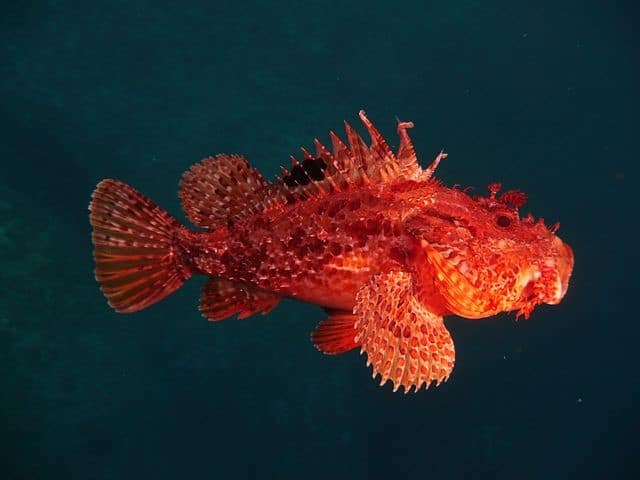
The eastern red scorpion fish is a ray-finned fish endemic to the temperate waters of the southwestern Pacific Ocean. It is also known as the cardinal scorpionfish, Cook’s scorpionfish all the Kermadec scorpionfish.
This fish inhabits the deepest and lowest parts of the ocean, where their laterally compressed body and red colors help them blend in with the coral reefs.
Cardinal scorpion fish are highly poisonous. They use multiple toxic spines and rays along their dorsal and anal fins to inject deadly venom. They live a sedentary lifestyle, so a red scorpionfish usually lay in ambush among similarly colored red corals. When a fish or crustacean comes within striking distance, they attack. Their food may consist of fish, crab, shrimp, or octopus.
They are physically similar but spatially and phenotypically different from the western scorpion fish, which have more varied colors.
5. Scarlet Tanager
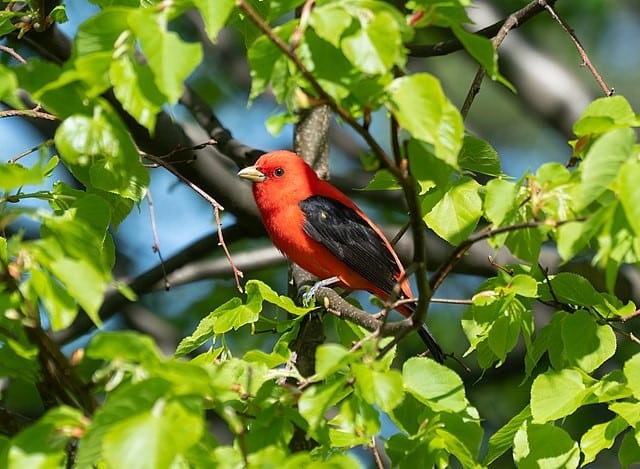
The scarlet tanager is a close relative of the northern cardinal. They are both medium-sized songbirds in the Cardinallidae bird family. However, unlike the northern cardinal, scarlet tanagers are only red animals during their breeding season, which lasts from May to August. Also, this red color is only seen in breeding males.
Other than that, male tanagers revert to an olive-yellow color similar to the females when the breeding season ends. In the case of the females, they retain an olive-yellow coloration all year round. These birds are migratory, breeding in eastern North America and wintering in warmer climes around northern South America.
Raptorial birds constantly threaten Scarlett tanagers, so they are easily aggressive and territorial. Once paired up, males have been observed being aggressive towards females who try to leave their territory. Females also chase away other females trying to come within their partner’s territory.
4. Indian Sea Star
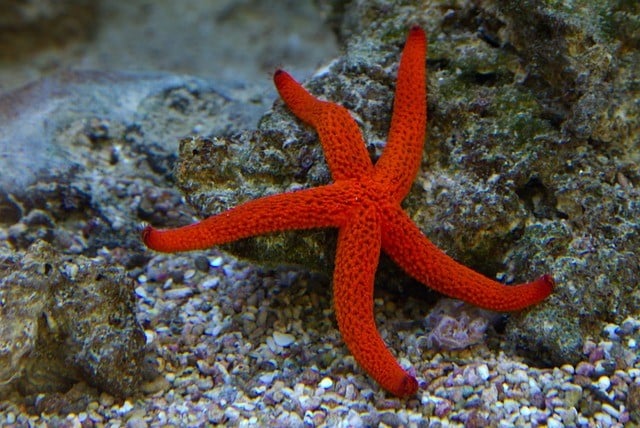
Also known as the red starfish, the Indian sea star is a starfish species known for its characteristic bright red color and a fine mesh of thin black lines. They are found across the Indian and western Pacific Oceans.
These organisms can reproduce sexually by releasing sperm and egg into the ocean, fertilizing them. Or by asexual reproduction, where a limb is broken off and regenerated into a separate individual.
These red animals mainly feed on algae, detritus, and small invertebrates in the lowest levels of the ocean. Because of their bright colors and simple food requirements, they make a cool feature of many aquariums worldwide.
However, being saltwater creatures, they are easily susceptible to mild chemical changes in their environment and succumb easily to infection.
3. Strawberry Poison Dart Frog
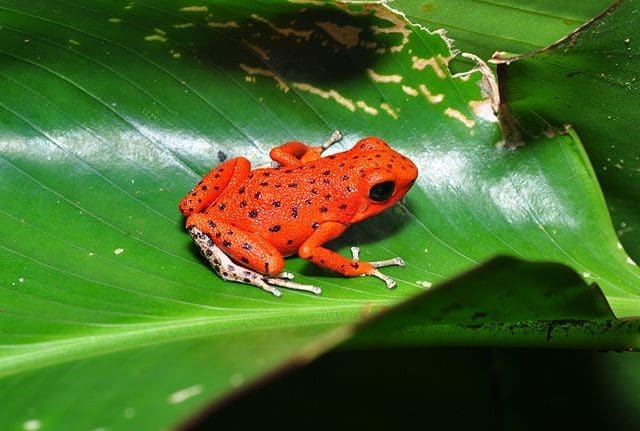
Poison dart frogs come in different colors and shades, but the strawberry dart frog is named for its brilliant strawberry-red colors. Like other poison dart frogs, these frogs secrete toxic alkaloids from their skin when alarmed. The toxins are pretty poisonous, disrupting normal cardiac functions.
Curiously though, these red animals do not synthesize this poison themselves but get it from feeding on poisonous mites and venomous ants. These amphibians are native to Central America, ranging from Nicaragua to Costa Rica and Panama.
Strawberry dart frogs have an enjoyable reproductive process unusual to many amphibians. Both parents stay with their young tadpoles and look after them till they mature.
While the male frog keeps the tadpoles hydrated, the female frog continues releasing unfertilized eggs to feed the young juveniles. This process can be physically demanding, but it is crucial because it provides the growing tadpoles with chemical defenses for a better chance at survival.
2. Blood Red Glider
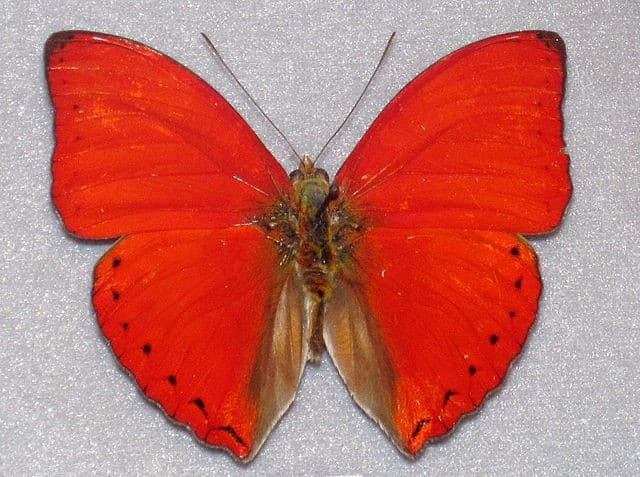
The blood red glider is an arboreal butterfly in western Central Africa, along the Guinean and Congolese rainforests. The dorsal surface of the male glider’s wings is a deep red, while the ventral surface is brown. The female species, however, spot a different color pattern.
Although the adult butterfly feeds on nectar and rotten fruits, the larvae feed exclusively on shrubs of the rhinorrhea plant, where the adult females lay their eggs.
They are not the biggest nor the most colorful butterflies, but these red animals are very popular among butterfly collectors. These insects are so cool to have that a dead, preserved blood red glider can cost as much as 80 US dollars.
1. Scarlet Ibis
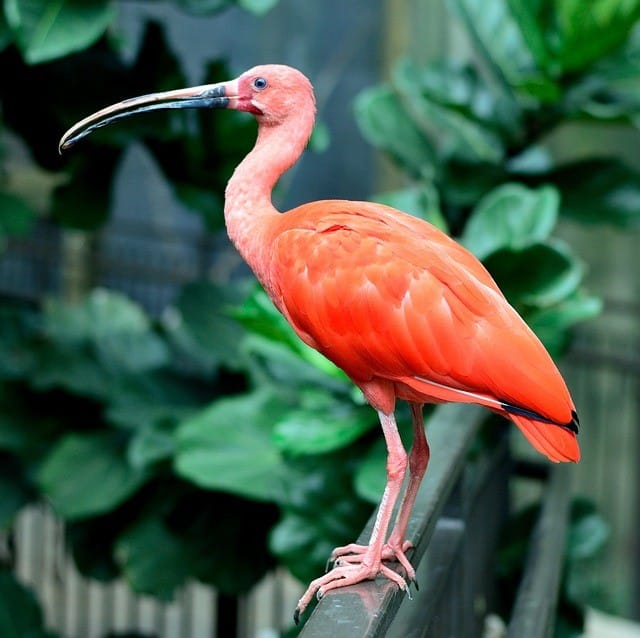
There are 27 species of Ibis birds worldwide, but you will surely stand out when you have an unmistakable red color like the scarlet Ibis. These wading birds have remarkable scarlet plumage, bills, and feet.
Similar to some other red animals, these birds’ color comes from what they eat. Their diet mainly consists of shrimp and red shellfish, which provides them with astaxanthin, the carotenoid pigment that gives them their red color. However, these birds may feed on frogs, snakes, seeds, and fruit. Being waders, they are typically found around swamps, mudflats, and coastal shores. Though endemic to the Caribbean and South America, they can migrate as far as the United States in search of favorable conditions.
They are highly social, with mating pairs sticking together sometimes beyond a mating season. Also, they are often seen in flocks of 30 to 100, in the company of other shorebirds like herons and flamingos.
Summary of 10 Red Animals
Red animals are not so common, but it isn’t difficult to spot them due to their bright coloration.
We’ve brought you the coolest of the bunch and hope you did enjoy your read.
Here is another post about 10 interesting blue animals or white animals.
- Animals and Wildlife in Colorado - April 24, 2024
- Best Places to see Sloths - April 24, 2024
- Where to See Alligators in the Wild - April 24, 2024

